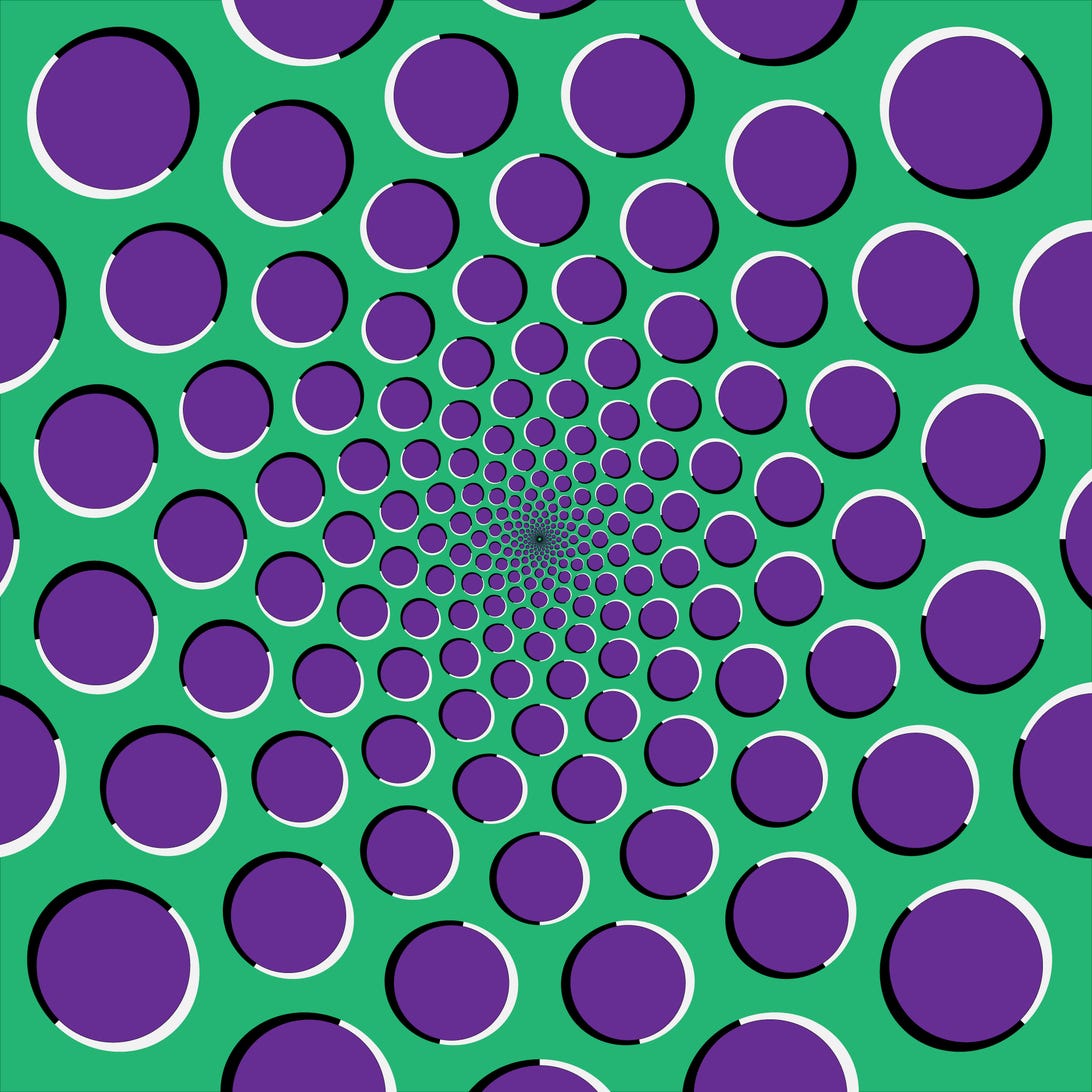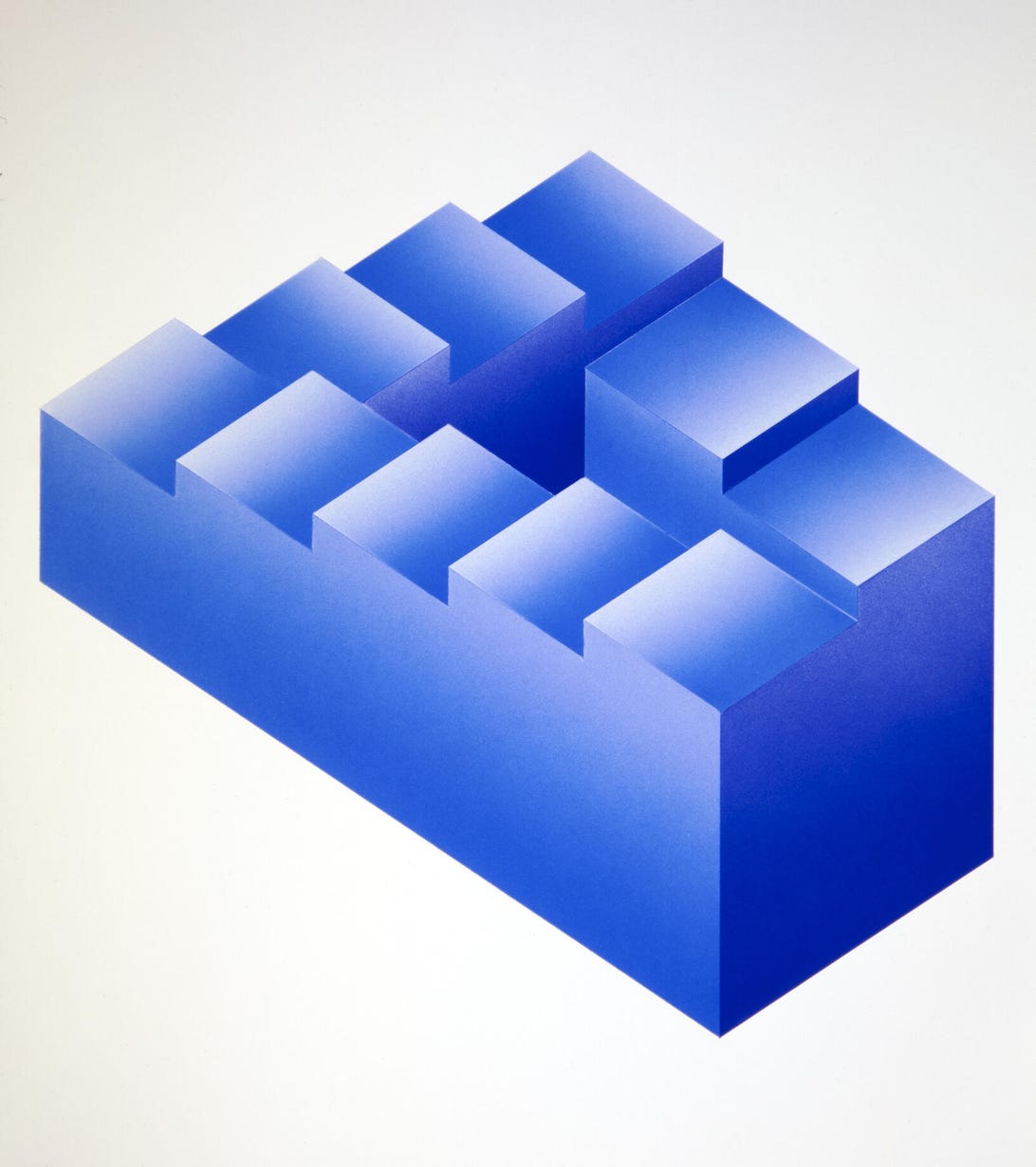[ad_1]
While you take a look at an optical phantasm, you might really feel it scratching your mind in all of the proper puts — or possibly all of the mistaken ones. Magic Eye paintings is one thing like a intellect therapeutic massage. However in case you stare lengthy sufficient at M.C. Escher’s unending Penrose stairs, it’ll disorient you into oblivion.
Smartly, take a deep breath as a result of a workforce of psychologists haven’t begun every other trippy intellect recreation for you.
It is described as an “increasing black hollow.” However actually, it is not increasing in any respect. It is static. See for your self beneath.
The “increasing black hollow” is an phantasm new to science as a result of it might urged your pupils to dilate in anticipation of coming into a dismal house.
Laeng, Nabil and Kitaoka
Do you notice that darkish ellipse frequently getting larger, form of imitating what it would be like in case you had been falling into it? I do know I do. And it is blowing my intellect. However in step with the crew’s analysis, revealed Monday within the magazine Frontiers in Human Neuroscience, there is way over creativeness at play after we look at this summary murals.
Because the phantasm implies a metamorphosis in gentle, aka the increasing darkness bit, the learn about authors write that it is “imaginable to probe the affect of the semblance no longer most effective by the use of an observer’s phenomenology, consisting of mindful verbal reviews, but in addition by way of analyzing a concurrent, involuntary, physiological index: the diameter of the attention student.”
In different phrases, this simply method if you are seeing a ballooning black hollow at the moment, your pupils are most definitely dilating, or expanding in diameter, as they’d if the opening had been legitimately increasing. Your pupils are being tricked.
“The ‘increasing hollow’ is a extremely dynamic phantasm,” Bruno Laeng, a professor on the Division of Psychology of the College of Oslo and primary writer of the learn about, mentioned in a remark. “The round smear or shadow gradient of the central black hollow conjures up a marked affect of optic drift, as though the observer had been heading ahead right into a hollow or tunnel.”

Do you notice the pink dots spiraling? Smartly, check out solving your eye on one house of the image and that’ll forestall them beautiful temporarily. However this once more is an ordinary optical phantasm.
Getty
Even supposing you did not say you noticed the semblance shifting ahead of you, your eyes is also silently providing you with away — and this realization is arguably extra proof that we would wish to reconsider the clinical price of our tiny optical voids. Our pupils, in a way, appear to be an attractive robust gateway into the human intellect. A contemporary learn about, as an example, additionally discovered that student dilation may just point out whether or not one has aphantasia, or loss of “intellect’s eye.”
This merely refers to 1’s skill to viscerally image gadgets of their intellect with out that object in truth being in entrance of them. Previously, aphantasia was once a feature most effective reported with verbal accounts and ceaselessly brushed aside as myth as a result of we did not have any organic evidence of the phenomena.
“Whilst it was once already identified that imagined gadgets can evoke so-called ‘endogenous’ adjustments in student measurement, we had been stunned to peer extra dramatic adjustments in the ones reporting extra bright imagery,” one researcher mentioned.

A model of M.C. Escher’s Penrose staircase.
Getty
However getting again to optical illusions, Laeng and fellow learn about researchers additional strengthened their level about pupillary reaction by way of measuring how 50 women and men with standard imaginative and prescient reacted to the brand new, trance-like phantasm. And, to shake issues up somewhat, they presented the themes this phantasm in plenty of colours — some had been requested to view blue, inexperienced, cyan, magenta, crimson, yellow or white holes (and surrounding dots) as a substitute of the usual black one we are having a look at.
The consequences mainly confirmed that the themes’ pupils did actually turn on in accordance with the semblance, despite the fact that that reflex was once best when depicted gadgets had been black. In members who may just see the growth going down, it gave the impression that the darkness promoted robust student dilations, however intriguingly, coloured variations induced the themes’ pupils to as a substitute constrict, which means that they were given smaller in diameter.
Particularly, the learn about provides a caveat that subjective reviews of hollow growth, particularly for the black model of the picture, a great deal differed from topic to topic. The researchers additionally mentioned they nonetheless don’t seem to be positive why some other people cannot moderately see the increasing hollow whilst others can.
Someday, Laeng mentioned the crew hopes to dissect whether or not different organic reflexes may just “throw gentle” on how people discover such mind-bending imagery.
There is additionally the query of whether or not this kind of involuntary, illusion-induced student response occurs to different species, too. I will be able to most effective ponder whether my cat, sitting proper at the back of me, may be getting the brain-scratchy feeling as he watches me write this newsletter, pupils dilating because of the spell binding black hollow pic above.
[ad_2]
